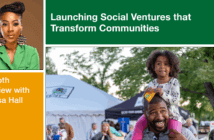While about 80 percent of people in the U.S. identify themselves as Christians, just under half of those belong to a local congregation. This is one of the findings of the 2010 U.S. Religion Census released May 1 by the Association of Statisticians of American Religious Bodies. Their decennial study identified 344,894 local congregations with data from 90 percent of them. The census covered religions other than Christian but did not track the growing number of persons, sometimes called the “nones,” who identify their religious affiliation as none and are estimated to represent about 16 percent of the population.
See what is happening around you…engage others in thoughtful discussion about why some groups are growing and others are not.
Fastest Growing
Mormonism is the fastest-growing group in the United States. They reported two million new adherents in the last decade. Mormonism is moving into more parts of the country than any other religious group. Muslims are the second fastest-growing group, with an increase of one million adherents in 197 new counties, for a total of 2.6 million.
This study also tracked the growth of nondenominational churches, which represent one of the nation’s largest Christian groups, at about 12.2 million adherents. There are 35,000 of these congregations, about the same number as the United Methodist Church, for example. Nondenominational churches are in the top five religious groupings in every state except two, and in nine states they constitute the second largest religious group.
Largest
Catholics, while losing about 5 percent of adherents in past years, nonetheless remain the nation’s largest religious group, at about 59 million. Southern Baptists are second with almost 20 million members found in 50,816 congregations, the largest cohort of churches in the country. Mainline Protestants as a single body represent 22 million members.
Find Changes in Your Locale — and Explore the Implications
The Association of Religion Data Archives (ARDA) web site provides tools that allow you to examine trends in your area. You may examine by zip code, county, state, nation, denomination, and other ways. See what is happening around you, and use the data as an opportunity to engage others in thoughtful discussion about why some groups are growing and others are not. A good ground rule is to ask everyone to stay positive and as objective as possible, with the goal being to identify clues that will help your congregation better fulfill its mission.
Questions you may want to consider as you examine the data include:
- In what ways does your community reflect or vary from the national trends?
- What are the changes going on among religious groups in your region?
- Are there new religious groups in your community?
- If so, how might this change represent an opportunity to reach out to them to foster greater understanding among long-time residents?
- In what ways might new religious communities offer new opportunities for cooperation around community needs?
- If your congregation is not growing as others are, how might you learn from others how to strengthen your ministry?
Related Resources:
- Bearing Fruit: Ministry With Real Results by Lovett H. Weems, Jr., and Tom Berlin






